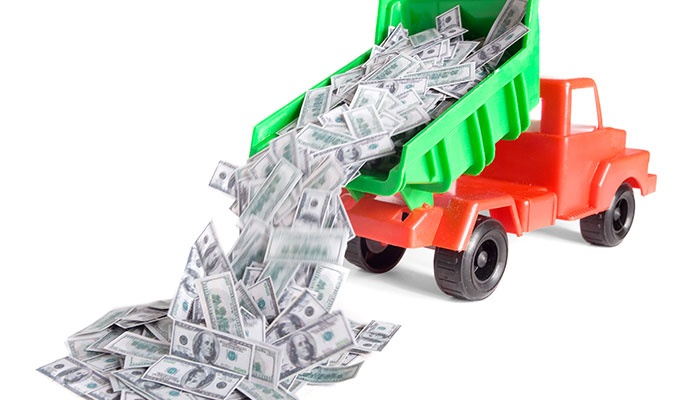Attempts by central banks around the world to stave off some of the economic fallout as a result of the coronavirus pandemic have driven interest rates down towards zero.

On March 19, the Reserve Bank of Australia cut interest rates to a record low of 0.25 per cent, extended funding of $90 billion to banks for small business and announced quantitative easing measures.
Dr Ben Wang, Senior Lecturer, Department of Economics at Macquarie Business School, says the benefits of zero or even negative rates are, at best, theoretical.
Negative interest rates
“Negative rates mean banks are charged to park their excess funds with the central bank, which is supposed to provide an incentive for banks to lend. Negative interest rates may also depreciate the currency, making our exports cheaper and thus lifting demand for Australian goods,” Wang says.
So what does zero or negative interest rates mean for prices and wages, i.e. inflation?
“Again, in theory, lower interest rates reduce borrowing costs and stimulate investment, and therefore the economy,” Wang says. “This should put upward pressure on wages and prices. But in reality, central banks would only implement negative interest rates in the hope they might help to put a troubled economy back on track. Experience from the Euro area and Japan has shown such actions have little impact on the economy, including inflation.”
“Coronavirus is one of those `black swan’ events that is hard to predict and a short-term economic downturn now seems unavoidable in Australia
In fact, negative inflation (or deflation) could be more of a concern than inflation. Consumers would interpret negative inflation - or deflation - as meaning prices are falling.
“So a purchase will be cheaper tomorrow than it is today. Consumers will therefore delay their purchase of non-essential goods and services, in particular big-ticket household items.
“Negative inflation also implies the real interest rate is higher than the nominal one. This makes the real cost of borrowing higher than what it appears, which in turn makes investment less appealing. And this further reduces demand in the economy.”
Quantitative easing
Other than reducing interest rates, there is another arm to monetary policy, known as quantitative easing. This involves a central bank buying government bonds or other financial assets in order to inject liquidity directly into the economy.

Dumping money: The Reserve Bank has cut interest rates to a record low of 0.25 per cent and is pumping billions of dollars into the economy to keep it running.
“Central banks would only implement negative interest rates when they have `fired all their bullets’ and effectively reached zero per cent,” says Wang.
“When the US Federal Reserve cut interest rates to essentially zero, they also announced a US$700 billion quantitative easing program. Together, these measures will help lift consumer and business sentiment, but will it be enough?
“Reducing interest rates will have a limited effect on households who fear stepping out of their house and/or being laid off. It will also have a limited impact on firms facing cash flow issues and ever-increasing uncertainty. How effective the quantitative easing will be depends on how whether these funds can navigate their way to the firms that desperately need them.”
“Fiscal policy (the use of government money to influence the economy) becomes even more important in this situation. Fiscal stimulus directly boosts demand in the economy and, if effective, can help central banks to shorten the time spent in negative interest rate/quantitative easing territory. RBA governor Philip Lowe has indicated the RBA is ready to implement unconventional policies.”
Black swans and grey rhinos
“Coronavirus is one of those `black swan’ events that is hard to predict and a short-term economic downturn now seems unavoidable in Australia. There are forecasts that we are heading into a recession, as early as the second quarter of 2020. And we are not alone; all of our major trading partners are heading in that direction,” Wang says.
- Working from home: how to make it work
- New star light collector detects earth-sized planets outside our solar system
“In addition to the black swans are the better-understood, so-called ‘grey rhino’ events. These are highly-probable, high-impact, yet neglected threats. Examples include the aging population, slowing productivity and rising underemployment and addressing these will be crucial if we are to maintain long-term, sustainable, economic growth into the future. When swans and rhinos get together, the negative impacts reinforce each other and this dims future growth prospects.”
Dr Ben Wang is a senior lecturer in the Department of Economics and the Centre for Workforce Futures and Centre for Risk Analysis.



